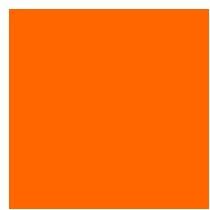Using the Color Orange in Desktop Publishing Projects
Using Orange in Desktop Publishing Projects
A playful melding of red’s warmth and yellow’s brightness, orange usually offers fun and happy connotations. It’s associations in nature with the glow of sunset, the radiance of autumn and the tanginess of fruit give in a warm vitality that gives DTP projects a decided punch. Viewers often have strong feelings about orange, so desktop publishers should take care in choosing the appropriate audience for the use of the color in projects.
What other unspoken messages does orange communicate when you use it in your desktop publishing projects? Let’s find out. Based on the following feelings and color theory associations prevalent in response to colors in the orange family, you can determine if purple is a good option for your next DTP project.
Color Associations
Bright orange tones that strike a near equal balance between red and yellow are widely seen as the hottest of all colors in temperature. Associations with the fruit that bears its name give orange a more tangy feel than the sharp citrus connotation of yellow. It can be hard to take orange seriously, since it often signifies playful and childlike qualities. Brighter versions certainly inject a note of happiness into applications. However, orange also symbolizes balance and warmth with a touch of vibrant flamboyancy.
The color orange can infuse projects with an ethnic quality because of it’s historical use in Native American, Latin American and African arts, as well as it’s association with exotic locales. Orange has also been shown to stimulate the appetite and is found in many foods. Apricot and coral versions of the orange hue are considered more sophisticated than bright orange and appeal to a more upscale audience. They have a nurturing, approachable quality as well as tactile connotations because of their association with sand, desert and rocks. Peach tones have strong associations with health and are flattering to most skin tones. They also signify delicious, fresh food and are a more subtle appetite stimulant than stronger oranges.
Because people generally have strong preferences about orange, it can be challenging to find the right application for it. Although brighter neon version are very readable, they sometimes carries a negative association of begin loud and boisterous. Orange can also be seen as cartoonish or childish when applied to more serious subject matter.
Orange can certainly inject desktop publishing projects with a powerful punch depending on the hue chosen, but it can also overpower or trivialize your design goals. It is very appealing to younger audience and is a good choice for child or teen related DTP projects. Because it stimulates the appetite much like yellow and red, it is also a good option for food service projects. Orange can serve as a warm counterpoint to blues and greens for environmental themes. It can also add depth and life to more analogous schemes using various reds and yellows. Using orange in combination with the other secondary colors can give DTP projects an ethnic tone.
This post is part of the series: Using Secondary Colors in DTP Projects
The secondary colors employ a complexity sometimes absent in primary colors. What do the orange, purple and green communicate when used in desktop publishing projects? This 3-part article series highlights each secondary color and describes its cultural associations and DTP design considerations.
